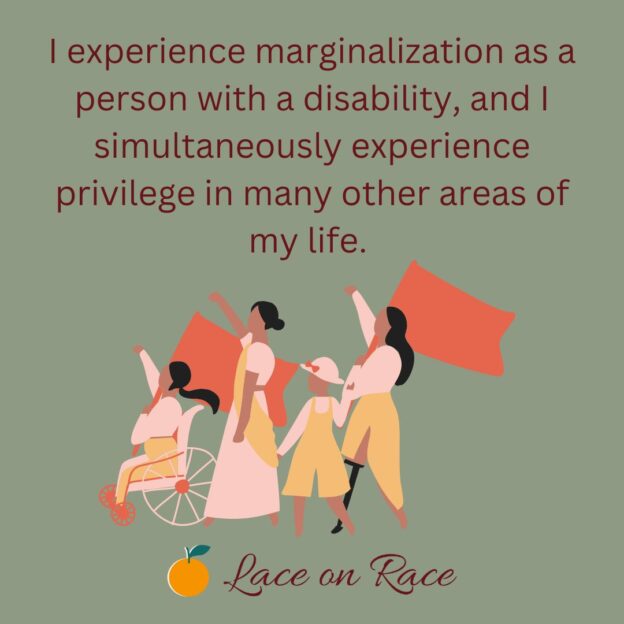By Kelsi Watters
White Cane Day is a national observance celebrated in the United States every year on October 15 since 1964. On October 6, 1964, Congress passed a joint resolution that allowed then President Lyndon B. Johnson to proclaim October 15 of every year as “White Cane Safety Day”.
The White Cane Law states that when a pedestrian is attempting to cross a street assisted by a guide dog or cane that is white in color or white with a red tip, the driver of any vehicle cannot approach within 10 feet of that pedestrian. In 2011, White Cane Day was also named Blind Americans Equality Day by President Barack Obama.
White Cane Day may be a national observance in regard to the resolution passed by the United States Congress; however, truthfully, White Cane Day is an international celebration, because blind and visually impaired people across the globe are breaking down barriers and making new strides every day. Furthermore, although White Cane Day (or Blind Americans Equality Day) is an annual observance; the achievements, safety and resilience of blind and visually impaired people should be recognized, celebrated, and supported every day of the year.
This being said, I want to bring attention to the way people in positions of privilege, myself included, often approach holidays and annual day or month-long observances seemingly created to celebrate or recognize different marginalized communities.
We may acknowledge the holiday or observance with a post on social media, an announcement at one’s workplace, school, or community event, or celebrate with a parade or party. That in itself is not a bad thing, but our acknowledgment cannot stop there.
A question we might ask is, what are we doing the rest of the year to stop perpetuating harm and to actively participate in creating a more equitable world for everyone?
Although I experience marginalization as a person with a disability, I simultaneously experience privilege in many other areas of my life. Therefore, I am determined to join in our shared responsibility to ensure that in addition to the national observances and holidays, people from all marginalized communities are seen and heard not just on that day or month of the year, but 24 hours a day, 7 days a week, 365 days a year.
Additionally, I would be remiss without a further acknowledgment – namely, that disability rights advocates, including blind and visually impaired people, owe a significant and often unacknowledged debt to the Black and brown liberation movement, since most of the framework, strategies, and tactics for the disability rights movement were taken directly from the Civil Rights playbook. It is also true that those who are multiply marginalized, being both Black or brown and having a disability, are often hit harder by disability rights issues due to lack of access to resources because of the color of their skin. This is one reason that awareness and acknowledgment of our simultaneous privilege and marginalization, is essential.
So, while White Cane Day is a day of celebration for me as a blind person, it is also a day of awareness and somber remembrance. I cannot fully acknowledge White Cane Day or any aspect of disability rights, without remembering my Black and brown brothers and sisters who paved the way, who faced barriers I have never encountered, often at the risk of their lives – for without the Black and brown liberation movement, disability rights as it stands today would not exist.
Acknowledgment is the first step. We all need to do better.
I am looking forward to walking with you through this next year together. Happy White Cane Day!
“For blind people, the white cane is an essential tool that gives us the ability to achieve a full and independent life. It allows us to move freely and safely from place to place – whether it’s at work, at school, or around our neighborhoods. White Cane Awareness Day is our way of emphasizing the critical role that this tool plays in living the lives we want and informing the public about its true significance.” – NFB President, Mark A. Riccobono
For additional resources, please check out American Council of the Blind (https://www.acb.org/) and the National Federation of the Blind ( https://nfb.org/ ).
Kelsi Watters is currently a hospital chaplain in Vancouver, Washington. She received her masters of divinity from St. John’s University school of theology and seminary in Saint cloud Minnesota, after which she went on to complete two years of chaplain residency training in Charlotte North Carolina. Kelsi is originally from Cameron Wisconsin, and has been totally blind since birth. Kelsi has been walking with the Lace on Race community for a little over two years, where among other things, she is learning how she can use her simultaneous identities of privilege and marginalization, specifically being both white and blind, to strengthen her walk and daily racial justice Praxis. She likes big hugs, chocolate and gospel music and has a joyful spirit most of the time.

Leave a Reply